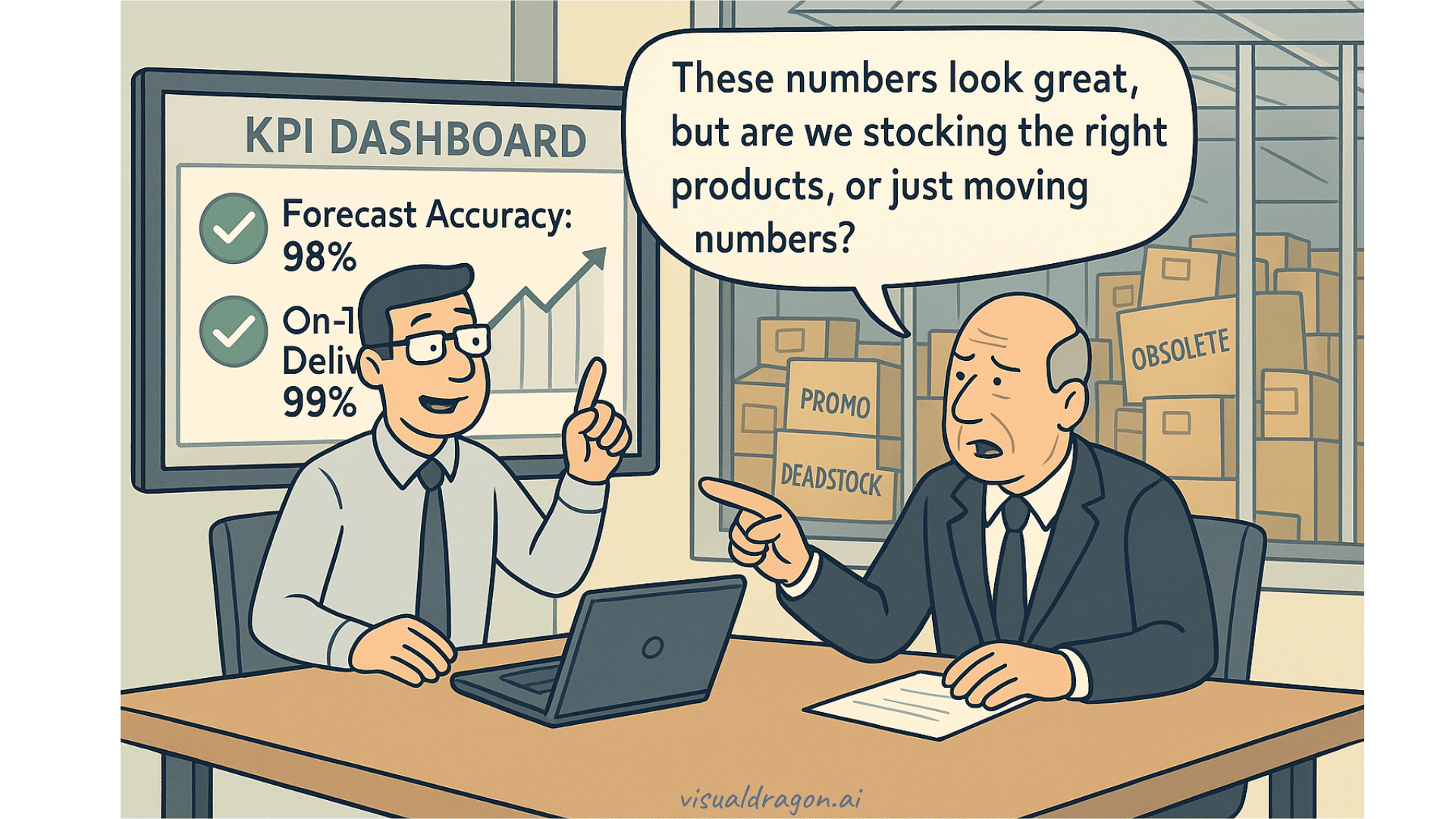How to Spot KPI Blind Spots Before Your CEO Does
Learn how to identify KPI blind spots your CEO will spot instantly. Go beyond metrics to reveal the real story in your supply chain reporting

Most dashboards look great until your CEO starts asking quesitons. Thats when KPI blind spots become painfully clear. These gaps between what your metrics show and what leaders really care about can derail even the most data-driven supply chain.
Table of Contents ▶
How to Detect KPI Blind Spots Early
Dashboards are designed to show what’s already happened. They are great for tracking performance, but they rarely surface the real questions that keep leaders up at night.
Here are five of those questions—and how forward thinking supply chain professionals are learning to answer them.
1. “Are we stocking the right stuff—or just moving numbers?”
Inventory metrics like Inventory Turnover and Days on Hand (DOH) make things look efficient. But they don’t tell you which products are gathering dust or quietly turning into scrap.
You might be sitting on a pile of slow-moving SKUs that look fine on paper until the next demand shift hits.
💡 How you can deep dive further
- Go beyond averages.
- Segment inventory by lifecycle, risk, and probability of it being sold.
- Simulate “what if” demand drops by 20%. That’s where cash flow protection starts.
2. “How confident are we in our forecast?
Forecast accuracy is often treated like a gold star. Hit 85% and pat yourself on the back.
But that number hides a lot. Maybe you're crushing the forecast on safe, predictable SKUs while missing high-value or volatile ones.
💡 How you can deep dive further
- Slice the forecast by region, product type, or customer volatility.
- Ask, “Where are we most wrong—and does it matter?” Because being 10% off on a key SKU is worse than 30% off on one that barely sells.
3. “Why does it feel like we’re always in scramble mode?”
The dashboard says OTIF is 93%. But quarter-end feels like a fire emergency. Emergency shipments, missed handoffs, late production. Does all these sound familiar?
Dashboards don't show the story behind those numbers. They don’t explain the domino effect of a miss upstream.
💡 How you can deep dive further
- Exceptions are golden opportunities. Identify them
- Perform a Root Cause Analysis (RCA) using the simplest 5 Whys as a start.
- Take courage and show leadership the full story, the good and the bad.
4. “Are we too dependent on one supplier and hoping that all will be well.
Maybe your supplier is performing well. Great OTIF. No delays.
But what happens if they suddenly go under?
Or a political shift shuts down trade from their region?
💡 How you can deep dive further
- Map risk, not just performance.
- Identify where the business is exposed—single-source suppliers, geographic bottlenecks, no Plan B.
- Start having such conversations with your leadership team. This is the kind of conversation that prevents disasters.
5. “Are we getting so efficient that we’re fragile?”
Lean is great until it leaves you with no buffer.
Dashboards reward low cost and high efficiency. But your team knows what it costs to react when things go sideways: expedited freight, missed sales, late nights.
💡 How you can deep dive further
- Balance cost with flexibility.
- Model different demand and lead time scenarios.
- Talk to your stakeholders and start asking, “What’s the cost of being too lean?”
- Engage leadership teams on the trade-offs.
Don’t Just Report the Weather. Reveal Insights
Your dashboard won’t get grilled in the leadership meeting. You will.
Don't just report on the past. Reveal what might happen next. Explain the trade-offs. Show where the blind spots are and how you can overcome them
Leadership isn’t looking for perfect numbers
They’re looking for foresight, honesty, and a plan